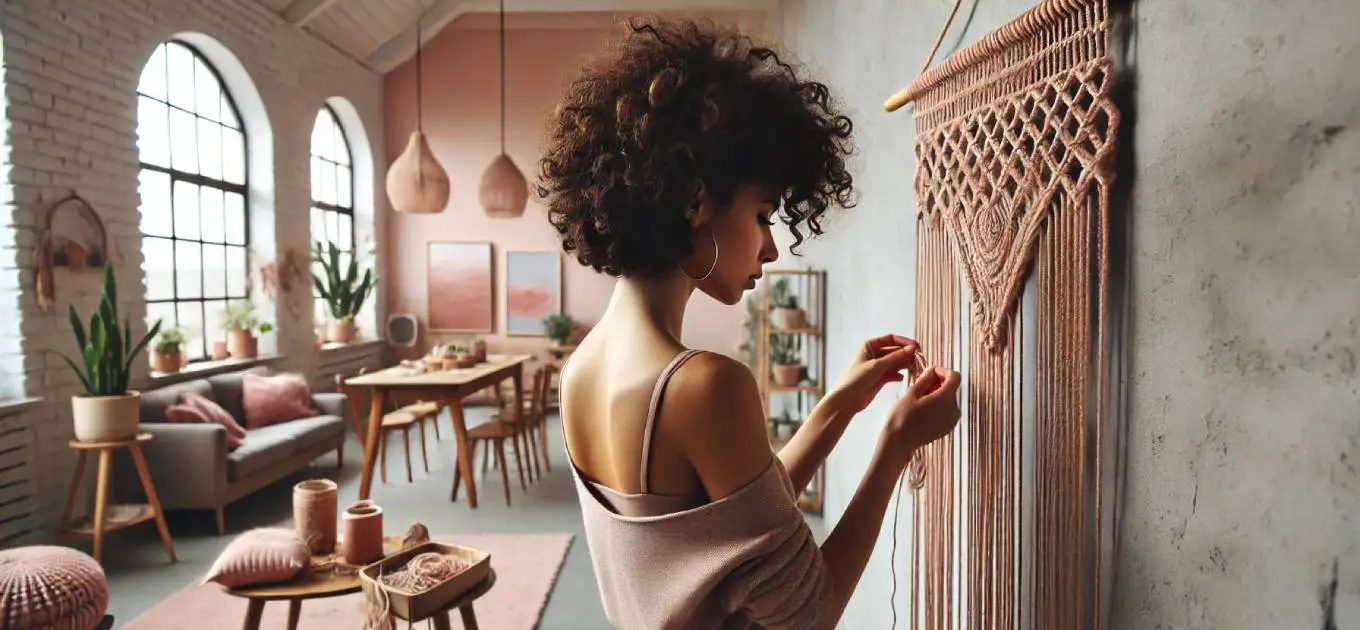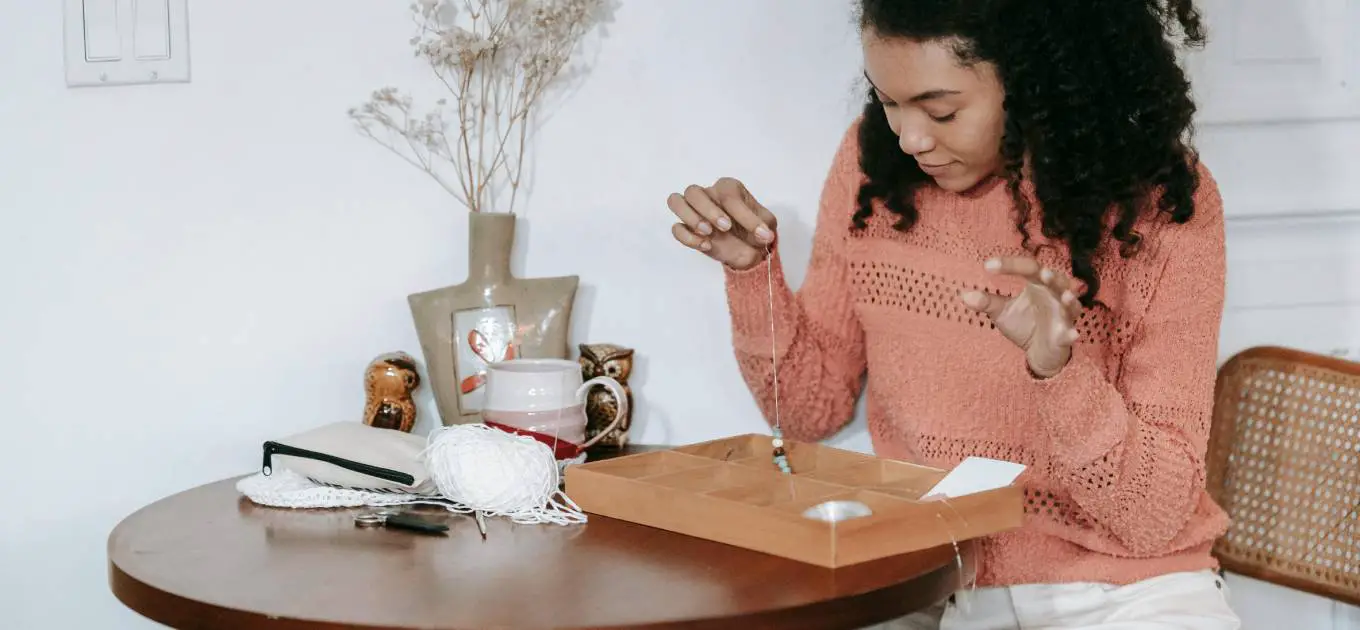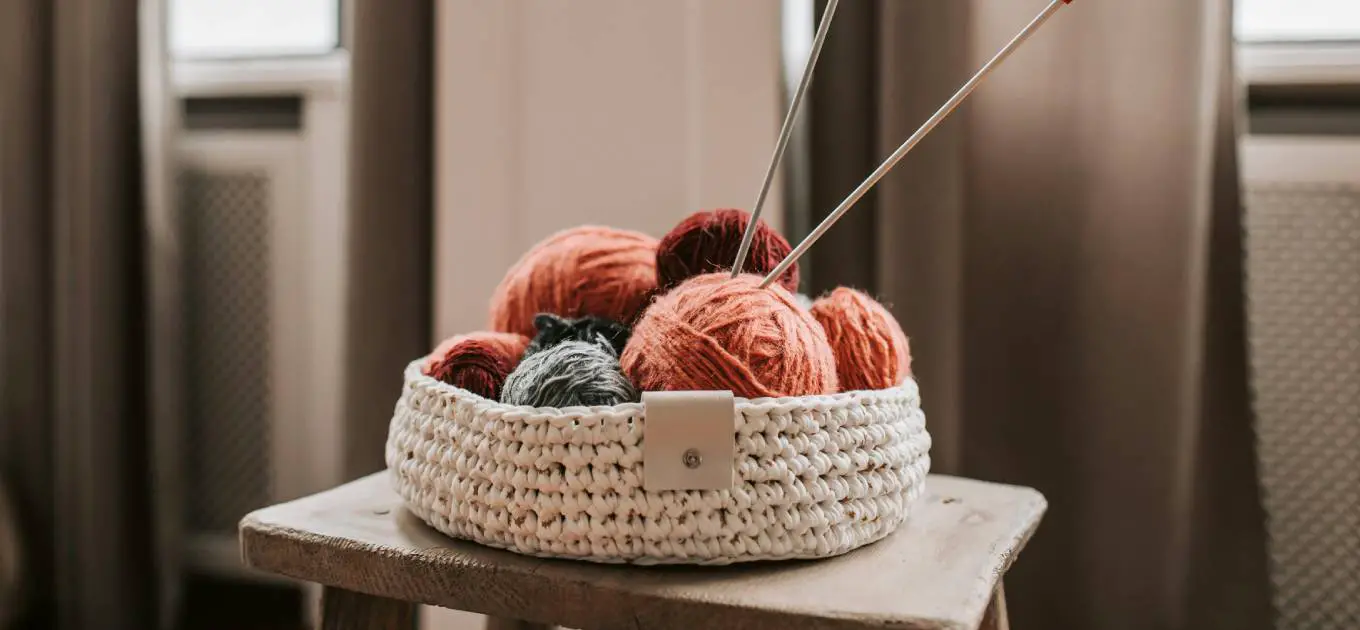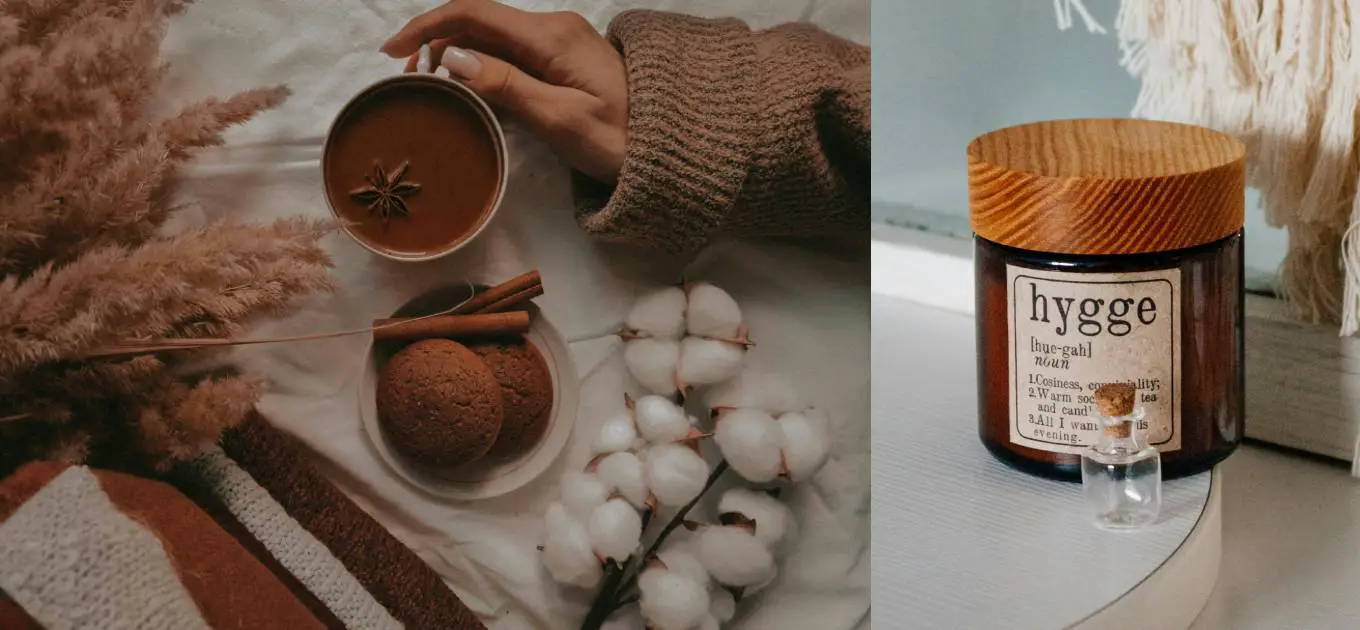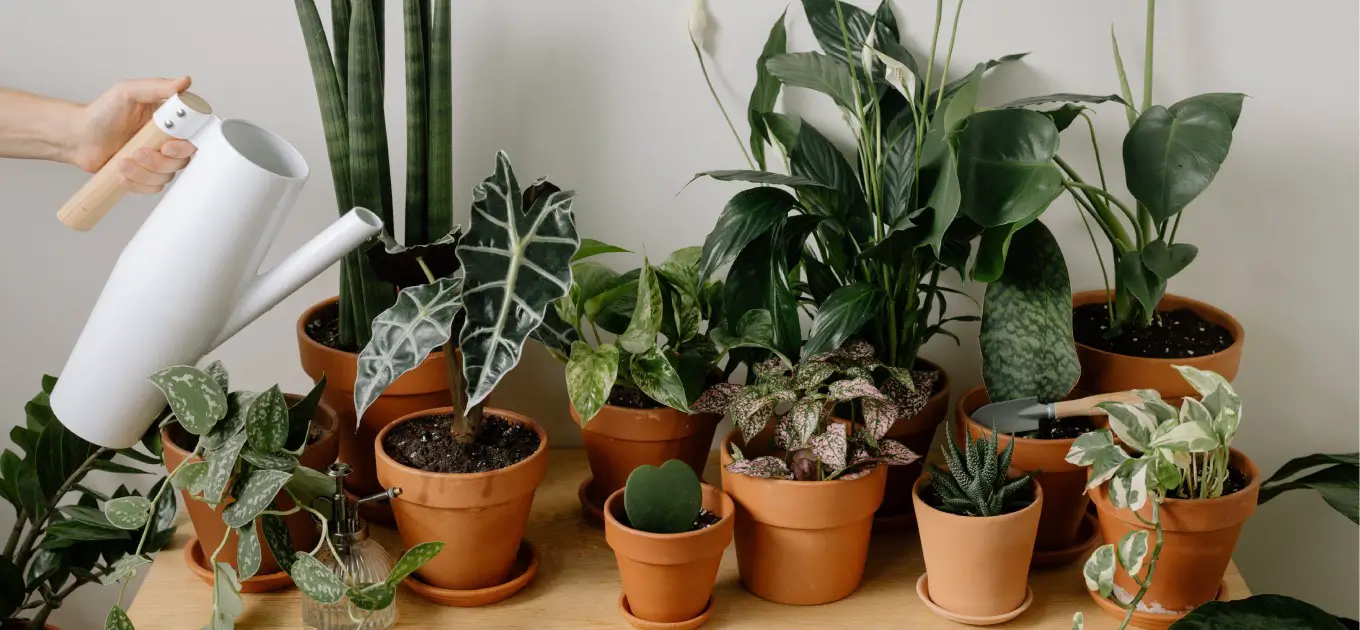
8 Best Plants for Macrame Plant Hangers
November 12, 2023 by Kate
Do you love plants? And do you love macrame? If the answer is yes, you’re in for a treat!
Imagine your living space adorned with lush greenery cascading from macrame plant hangers, doubling your plant display space and infusing your home with natural elegance. Sounds dreamy, doesn’t it?
This blog is your guide to selecting the perfect plants for macrame plant hangers, along with essential care tips. Dive into the fusion of macrame and plant love, and let’s create an indoor oasis that’s both boho chic and teeming with life.
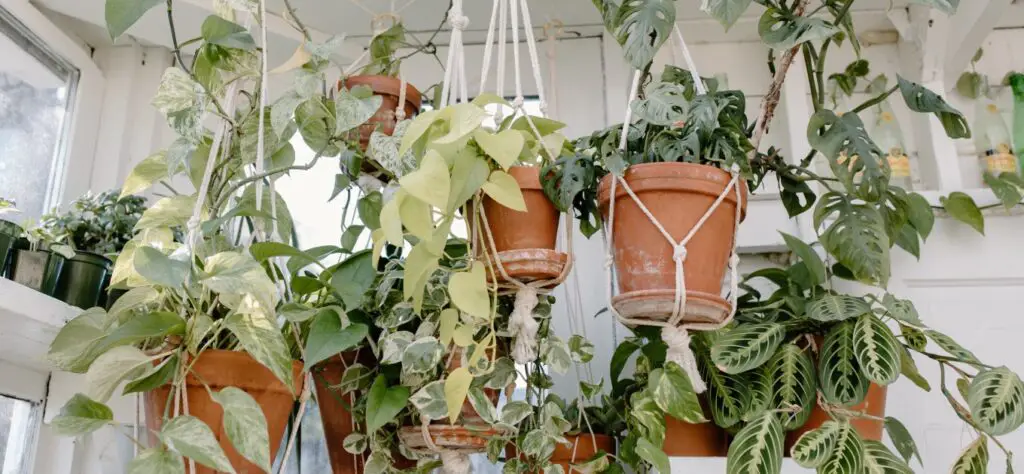
What Plants are Good for Macrame Hangers?
Plants like pothos, spider plants, string of pearls, ivy, inch plants, and ferns are ideal for macrame hangers. These species thrive in indoor environments, requiring minimal sunlight. Their cascading nature complements the elegant drapes of macrame, creating a visually appealing display. These choices combine aesthetic charm with ease of care, making them perfect for macrame plant hangers.
1. Pothos
Pothos, or devil’s ivy, has become my ultimate choice for macrame plant hangers. As a beginner’s dream, this lush greenery from the tropical vines of French Polynesia effortlessly adapts to any environment. Whether in bright, indirect light or low-light corners, it thrives, making it ideal for any home. Its ability to grow in both dry soil and water-filled vases offers unmatched versatility.
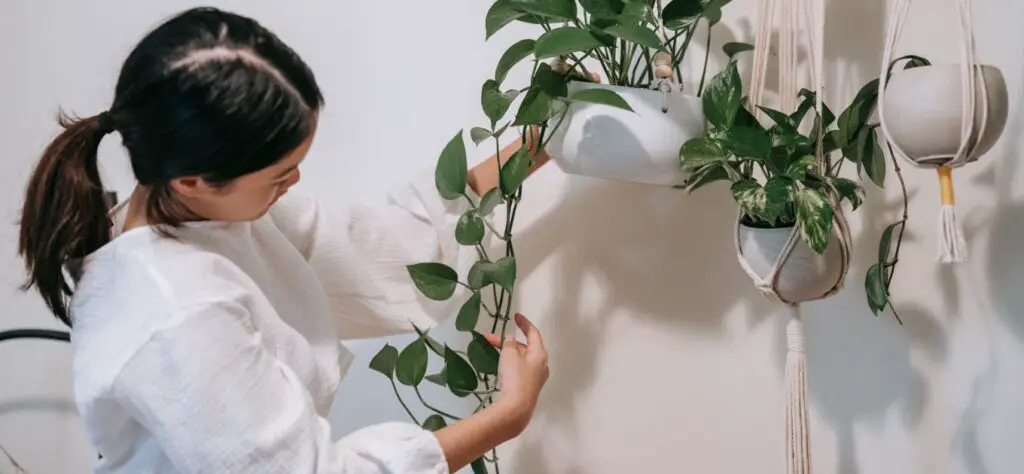
I’ve learned that while it’s undemanding, proper drainage is essential to prevent overwatering. Pothos’ adaptability to various light conditions, excluding direct sunlight, makes it a perfect fit for bathroom and office spaces. With its low-maintenance charm, pothos truly brings macrame plant hangers to life, infusing my home with natural elegance and boho allure.
2. Spider plants
Spider plants (Chlorophytum comosum) have secured their place as my go-to choice for indoor greenery, especially in my macrame plant hangers. Originating from South Africa, these hardy plants boast evergreen leaves that maintain their beauty throughout the year. Their compact size, usually under 50cm in height, makes them perfect for shelves or hanging baskets, showcasing their elegant trailing foliage.
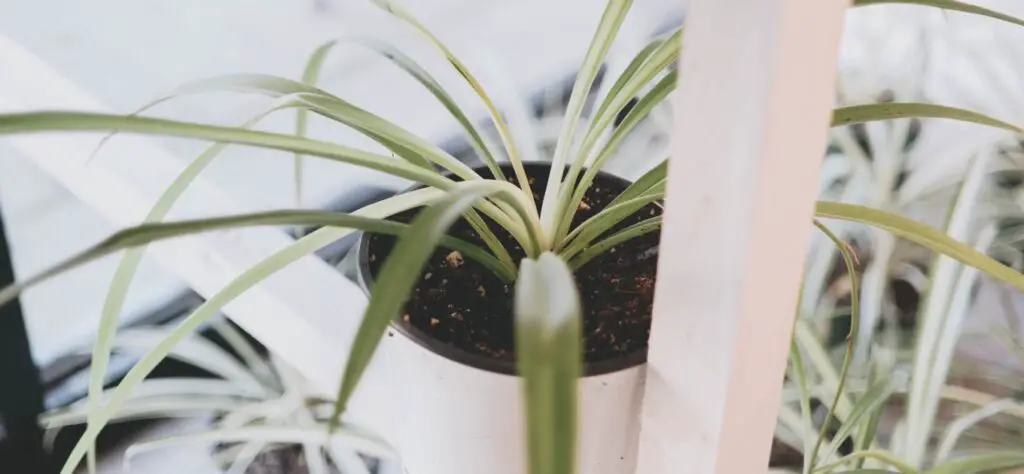
One of the greatest perks of owning a spider plant is its ease of propagation. These resilient plants produce ‘spiderettes,’ tiny offshoots at the ends of stems, which can be grown into new plants for free. To ensure their vibrant green leaves, I’ve found a bright spot away from direct sunlight, steering clear of temperatures below 8 degrees Celsius during winter.
Spider plants tolerate shade but may turn yellow if light is insufficient. To enhance their growth, a humid environment works wonders. Placing them in bathrooms or kitchens, away from intense south-facing sunlight, nurtures their lush appeal. With their adaptability and natural beauty, spider plants have become an essential addition to my indoor sanctuary, adorning my macrame plant hangers with grace and elegance.
3. Ivy
While outdoor ivy can be invasive, cultivating it indoors allows you to enjoy its beauty responsibly. Ivy plant care is a breeze, making it an effortless addition to your indoor garden. Originating from Europe and Asia, common ivy, also known as English ivy, found its way to North America in the 1800s, quickly becoming a beloved houseplant.
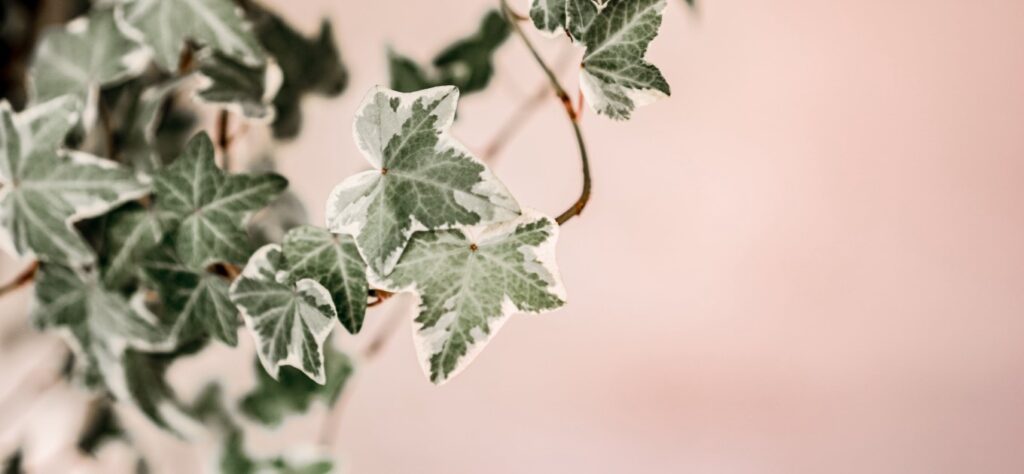
I’ve discovered that ivy’s care revolves around moderate humidity and well-draining soil. Placing a pebble tray under the plant offers extra moisture, ensuring its lush growth. Proper watering is crucial – I let the top half-inch of soil dry before watering again, preventing soggy conditions.
In terms of lighting, ivy thrives in bright, indirect light, with a touch of morning sun for a healthy boost. For variegated ivy, some direct light enhances its vibrant appearance. By embracing indoor ivy, I’ve found a charming, eco-friendly way to adorn my home, enhancing my macrame plant hangers with natural elegance and a touch of greenery.
4. String of Hearts
String of hearts (Ceropegia woodii) also known as rosary vine, chain of hearts, or Chinese lantern. This plant has found its place in my indoor haven, enhancing my decor and complementing my macrame plant hangers with its natural charm and resilient beauty. This low-maintenance beauty thrives in well-drained cacti potting mixes, appreciating bright, dappled sunlight for optimal growth and abundant flowering.
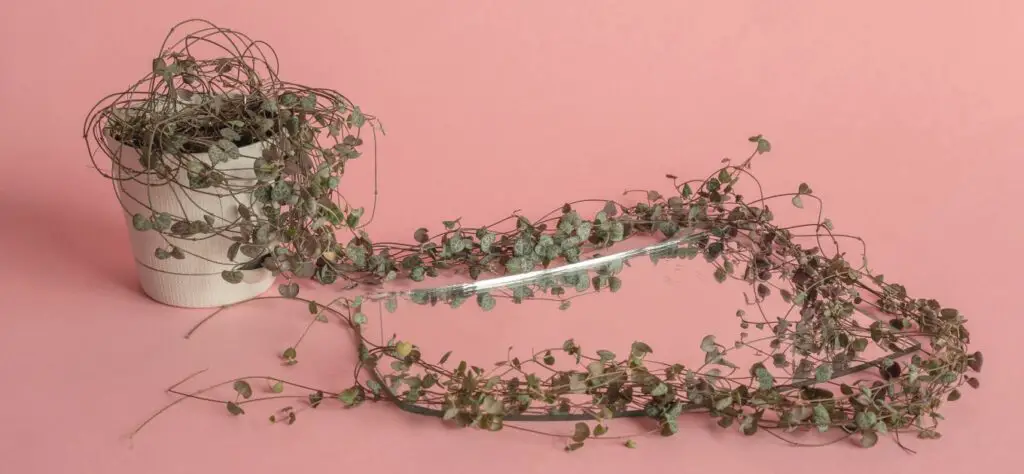
A favourite among inexperienced plant enthusiasts, the string of hearts copes remarkably well with occasional neglect, making it a robust choice. While it’s drought-tolerant, regular watering is essential, allowing the soil to dry between deep waterings to prevent swollen foliage. Ensuring excellent drainage is vital, as excess water can lead to messy growth.
Temperature-wise, it endures brief cold spells but falters with prolonged exposure, especially if moisture levels are insufficient. High humidity during winter dormancy isn’t its preference; instead, warm temperatures and good air circulation yield the best results.
5. The Inch-Plant
The Inch-plant, also known as the Wandering Jew (Tradescantia zebrina), includes various Tradescantia species, bringing vibrant hues to your macrame plant hangers. Tradescantia fluminensis ‘Quicksilver,’ Tradescantia pallida ‘Purple Heart,’ and Tradescantia zebrina ‘Tricolor’ offer striking options for hanging planters.
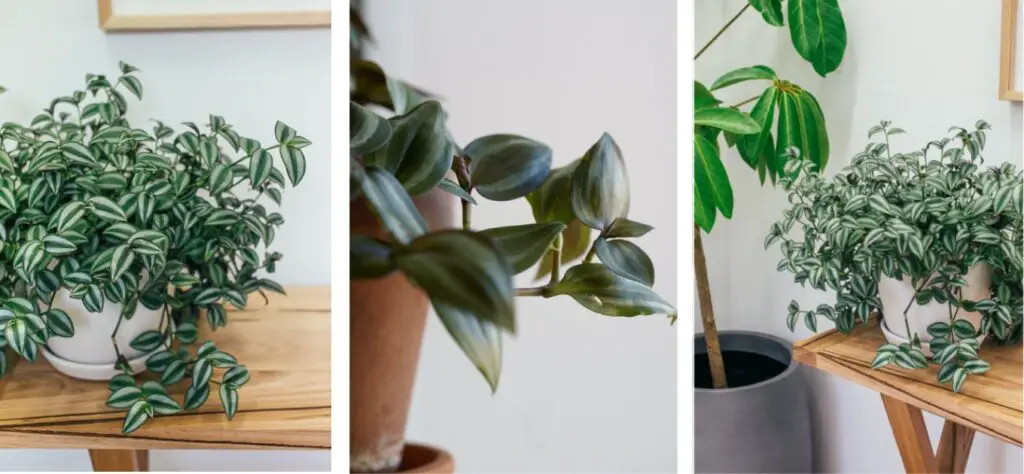
Thriving in bright indirect light, these plants thrive with a balanced mix of organic matter, compost, perlite, and peat moss. While their foliage adds charm, it’s crucial to note that some species can be harmful to pets. Inch plants, with their vivid appeal and easy care, are captivating choices for enhancing your macrame hangers.
6. Ferns
Ferns, typically outdoor dwellers, have found their home inside, enhancing the boho vibe of my decor. The Boston fern, forgiving and adaptable, is a perfect starting point for any aspiring plant enthusiast, while the elegant maidenhair ferns have become my personal challenge.
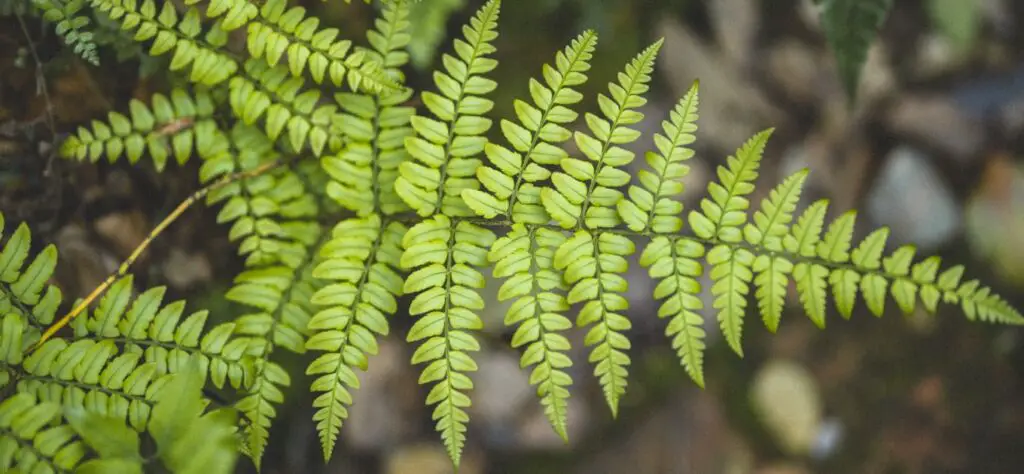
Ferns thrive in gentle, indirect light, away from harsh sun rays, with temperatures between 65-75°F during the day and slightly cooler at night. Maintaining consistent moisture levels and occasional misting create the ideal environment. Monthly, a diluted liquid fertilizer provides essential nutrients, supporting their growth. Repotting every few years, especially when roots become restless, ensures their vitality.
While demanding a bit of attention, these ferns reward me with their graceful presence, enhancing my macrame plant hangers.
7. String of Pearls
The String of Pearls (Senecio rowleyanus sometimes known as Curio rowleyanus), is a sought-after hanging succulent, adorning spaces with its unique charm. Originating from West Africa, this plant boasts pea-like leaves resembling beads, hence its name. Its fast-growing tendrils, reaching up to 1m long, make it an ideal choice for macrame plant hangers.
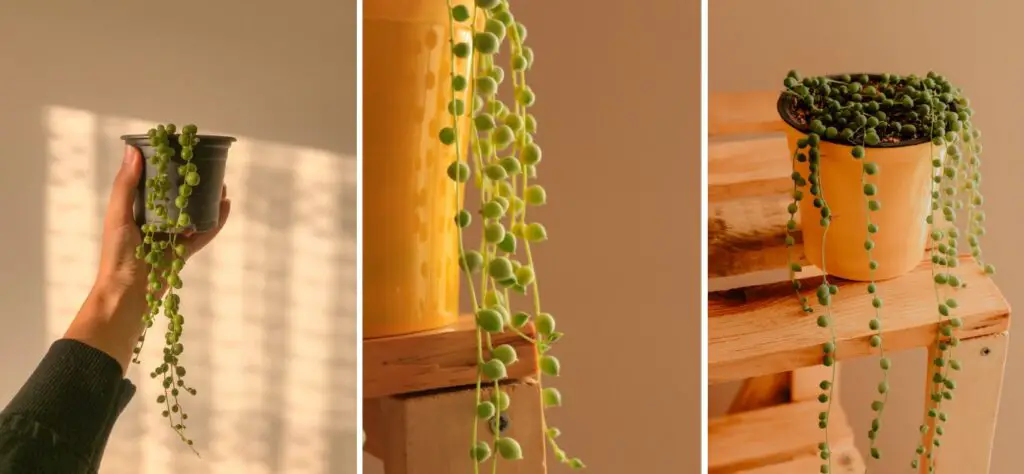
Perfect for beginners, this resilient plant stores water in its ‘beads,’ thriving even with occasional neglect, needing water only every few weeks.
Placing it in bright, indirect light ensures its vitality, and a shallow dish watering method prevents waterlogged crowns. Keep it away from direct sun and draughts, maintaining a temperature between 13-16°C in winter for optimal flowering.
Delicately handle this plant, prone to losing leaves. Pruning straggly ends maintains its neat appearance, while repotting every few years ensures its continued elegance.
So, whether you’re an experienced plant enthusiast or just starting on your plant journey, the String of Pearls is an excellent choice. It’s not only an intriguing addition to your macrame plant hangers but also a conversation starter!
8. Lipstick Plant
Finally, last but not least. The Lipstick Plant (Aeschynanthus radicans) is a striking evergreen tropical perennial, and a beloved houseplant. Its name is inspired by the vivid red tubular flowers adorning its branches. In the wild, this epiphytic beauty thrives on tree branches and rocky crevices in its native tropical habitat.
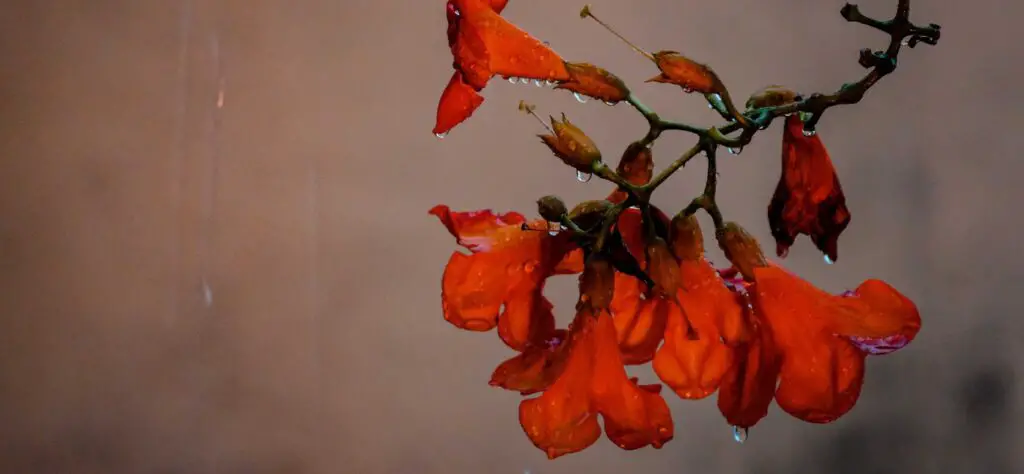
As a houseplant, it thrives in a well-draining potting mix. To enjoy a profusion of vibrant blooms throughout the year, offer your Lipstick plant the right conditions: warmth, humidity, and filtered sunlight, with the grandest show during summer and fall.
Surprisingly low-maintenance, this plant thrives in bright, filtered light, well-aerated soil, and regular, moderate watering. Maintain temperatures between 65-75°F, ensuring high humidity and morning misting. Feed it with slow-release fertilizer during the growing season, and watch your Lipstick plant enhance your indoor greenery. Its blossoms and lush foliage beautifully complement your macrame plant hangers, elevating your botanical haven. Embrace the tropical charm of the Lipstick plant and let your indoor oasis flourish.
Final thoughts
To conclude – these eight plant companions have not only elevated my macrame plant hangers but transformed my living room into a boho jungle – a delightful green escape. Embracing the bohemian vibes, each plant brings its unique touch, creating a harmonious haven. Beyond aesthetics, the lush greenery contributes to a healthier home, offering relaxation and a breath of fresh air. With their oxygenating benefits, these plants not only enhance the atmosphere but also promote well-being.
So, whether you’re a seasoned plant enthusiast or just starting your journey, consider adding these green comrades to your macrame collection. Your space will thank you with a burst of life, a touch of boho charm, and a breath of fresh, oxygen-rich air! If you’re inspired to craft your macrame plant hanger, check out my blog for a step-by-step guide.
FAQs
How do you water hanging plants in macrame?
Watering hanging plants in macrame involves a careful balance. Start by checking the moisture level; insert a finger into the soil to assess dryness. Ensure your plant is in a removable pot with a drainage hole for excess water to escape, preventing overwatering.
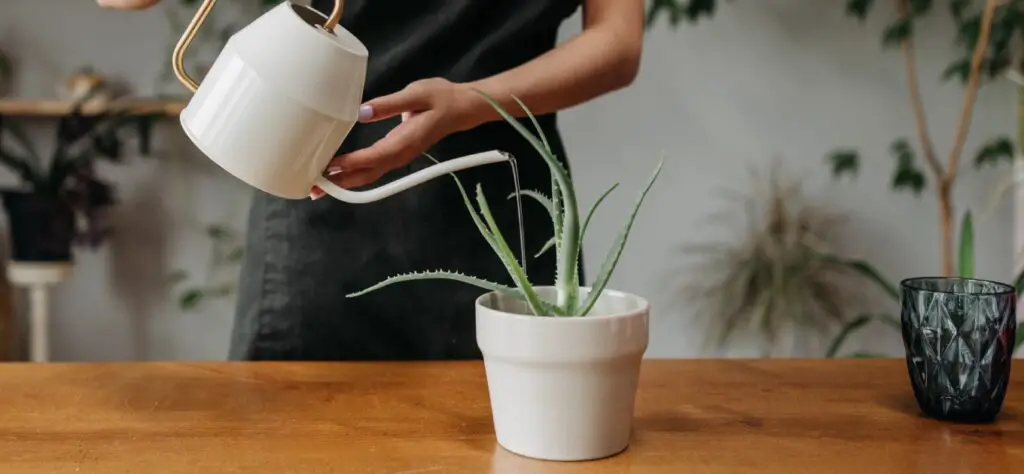
Use a watering can with a narrow spout to direct water precisely at the plant’s base, avoiding the macrame knots. Regularly monitor your plant’s water needs based on its species and environment, preventing root rot and maintaining a healthy, vibrant display.
What are the benefits of macrame plant hangers?
Macrame plant hangers offer a myriad of benefits. Firstly, they optimise space, allowing you to showcase plants in areas with limited surfaces. Secondly, they elevate aesthetics, infusing your space with boho charm and natural elegance. Additionally, these hangers prevent pets and children from accessing plants, ensuring safety.
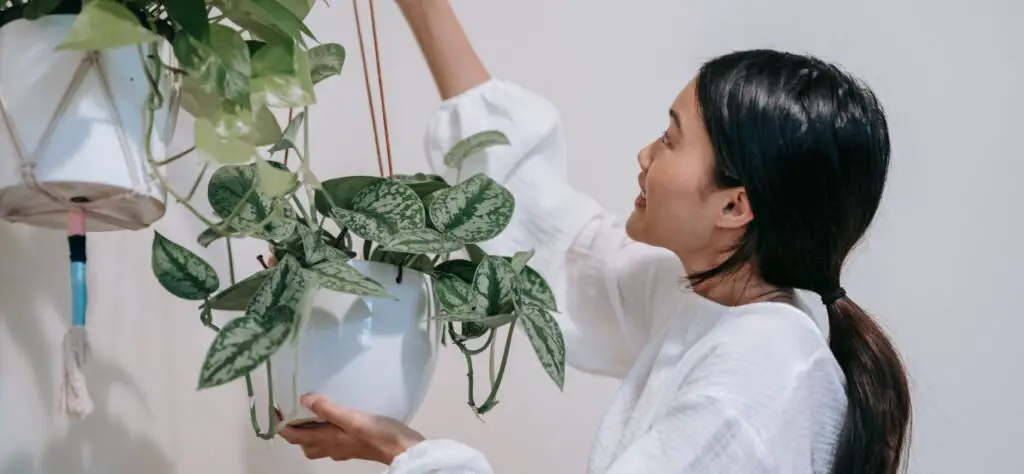
Moreover, they facilitate better air circulation, promoting plant health. Lastly, macrame hangers act as stunning decor elements, adding a touch of artistry to your interior. With their versatility and visual appeal, they enhance both your decor and well-being, making them a popular choice for plant enthusiasts and design aficionados alike.
How much weight can a macrame plant holder hold?
The weight a macrame plant holder can support depends on its design and materials. Generally, sturdy macrame plant holders made from durable materials like cotton or jute can hold between 12-15 pounds. However, it’s crucial to check the specific weight limit mentioned by the manufacturer or creator.
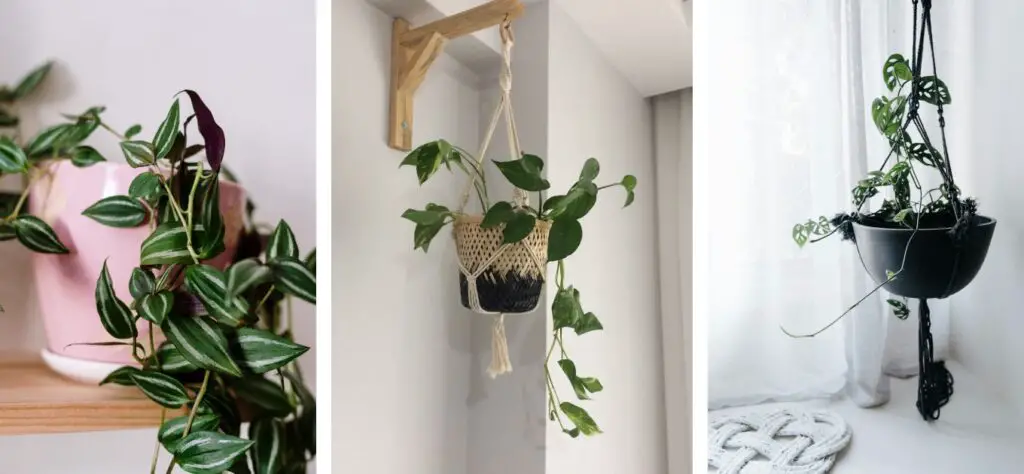
Factors like the thickness of cords and knots, as well as the quality of the attachment points, determine the holder’s weight-bearing capacity. Always ensure your plant’s weight aligns with the holder’s specified limit to maintain stability and prevent accidents.

